Discover 11 hidden attractions, cool sights, and unusual things to do in Dorchester (United Kingdom). Don't miss out on these must-see attractions: Dorset County Museum, Athelhampton House, and Hardy Monument. Also, be sure to include Thomas Hardy's Cottage in your itinerary.
Below, you can find the list of the most amazing places you should visit in Dorchester (England).
Table of Contents
Dorset County Museum

Museum in Dorchester, England. The Dorset County Museum is located in Dorchester, Dorset, England. Founded in 1846, the museum covers the county of Dorset's history and environment. The current building was built in 1881 on the former site of the George Inn. The building was designed specifically to house the museum's collection and is in the neo-Gothic style.
The museum includes information and over 2 million artifacts associated with archaeology (e.g. Maiden Castle), geology (e.g. the Jurassic Coast), history, local writers (e.g. Thomas Hardy) and natural science. There are video displays, activity carts for children, and an audio guide. The collections include fossilised dinosaur footprints, Roman mosaics and original Thomas Hardy manuscripts.[1]
Address: High West Street, DT1 1XA Dorchester
Athelhampton House

English civil parish. Athelhampton is a settlement and civil parish in Dorset, England, situated approximately 5 miles east of Dorchester. It consists of a manor house and a former Church of England parish church. Dorset County Council's 2013 mid-year estimate of the population of the civil parish is 30.[2]
Address: Athelhampton Rd, Dorchester
Hardy Monument
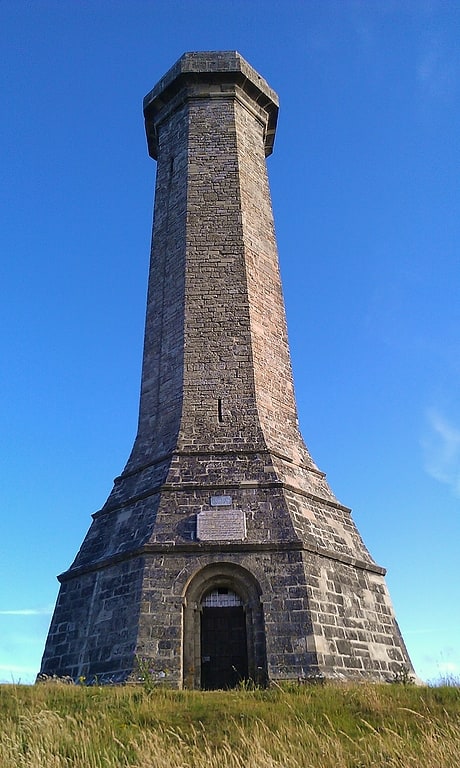
The Hardy Monument is a 72-foot-high monument on the summit of Black Down in Dorset, erected in 1844 by public subscription in memory of Vice Admiral Sir Thomas Hardy, flag captain of Admiral Lord Nelson at the Battle of Trafalgar. Admiral Hardy lived in Portesham and his family owned the Portesham estate which stretched from the middle of Portesham to Black Down. The site for the monument was chosen because the Hardy family wanted a monument which could be used as a landmark for shipping. The monument has been shown on navigational charts since 1846 and is visible from a distance of 60 miles.
The monument is situated on Black Down, a hill overlooking the English Channel near Portesham in Dorset, England, on the road between Abbotsbury and Martinstown. It was restored in 1900 by his descendants and bought in 1938 by the National Trust for the sum of £15.
The monument was designed to look like a spyglass, as Admiral Hardy would have used on board ship. Its eight corners are aligned with the compass points. Viewed from the ground the corner to the right of the lightning conductor points due south. The bench mark on the northwest face denotes the altitude of Black Down at 780 feet.
From the top of the monument at a height of 850 feet above sea level it is possible on a clear day to see the coast from Start Point, Devon to St. Catherine's Point on the Isle of Wight, both of which are 56 miles distant. To the north can be seen Pen Hill in the Mendip Hills which is 38 miles away.
The monument was closed to the public in 2009 when major renovation work was required. This work was completed in January 2012. To date, the monument is regularly opened during the peak season, where visitors can climb the 120 steps to the viewpoint at the top.
The heathland area around the monument was in 1984 designated a Site of Special Scientific Interest, when the Nature Conservancy Council decided that the geology of the area was very rare.
The monument was designated as a Grade II listed building in 1956.
Adjacent to the monument is a stone seat erected in memory of Lt Col William Digby Oswald who was killed on the Somme in 1916.[3]
Address: National Cycle Route 2, DT2 9HY Dorchester
Thomas Hardy's Cottage
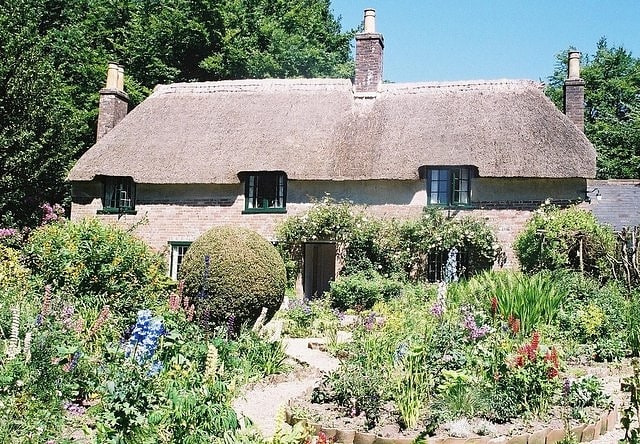
Building in England. Thomas Hardy's Cottage, in Higher Bockhampton, Dorset, is a small cob and thatch building that is the birthplace of the English author Thomas Hardy. He was born there in 1840 and lived in the cottage until he was aged 34—during which time he wrote the novels Under the Greenwood Tree and Far from the Madding Crowd —when he left home to be married to Emma Gifford.
The cottage was built by Hardy's great-grandfather in 1800. It is now a National Trust property, and a popular tourist attraction. The property has a typical cottage garden, and the interior displays furniture which, although not from the Hardy family, is original to the period. The property is situated on the northern boundary of Thorncombe Wood. It is only three miles from Max Gate, the house that Hardy designed and lived in with Emma Gifford from 1885 until his death in 1928.
In 2012 the go ahead was given to a project to build a new visitor centre near the cottage. The project also included new trails in Thorncombe Wood. The project, which secured £525,000 from the Heritage Lottery Fund, was a joint partnership between Dorset County Council and the National Trust. The visitor centre opened in September 2014.[4]
Address: Higher Bockhampton, DT2 8QJ Dorchester
The Keep

Museum in Dorchester, England. The Keep, Dorchester is part of the former county barracks of the 39th Regiment of Foot and the 75th Regiment of Foot. The barracks were built in about 1880 and housed various regiments as units were amalgamated. It ceased to be used in 1958 and most of the site was redeveloped in the 1960s, but the keep remained in Ministry of Defence hands and is now used as a regimental museum. It is a Grade II listed building.[5]
Address: Barrack Road, DT1 1RN Dorchester
Max Gate
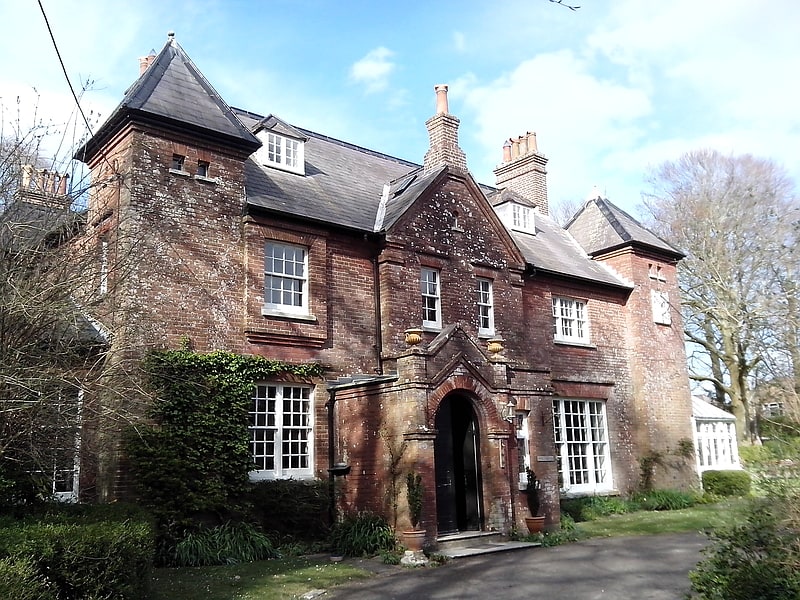
Building in Dorchester, England. Max Gate is the former home of Thomas Hardy and is located on the outskirts of Dorchester, Dorset, England. It was designed and built by Thomas Hardy for his own use in 1885 and he lived there until his death in 1928. In 1940 it was bequeathed to the National Trust by Hardy's sister and is now open to the public. It was designated as a Grade I listed building on 8 May 1970.[6]
Address: Alington Avenue, DT1 2AB Dorchester
Dorset Teddy Bear Museum
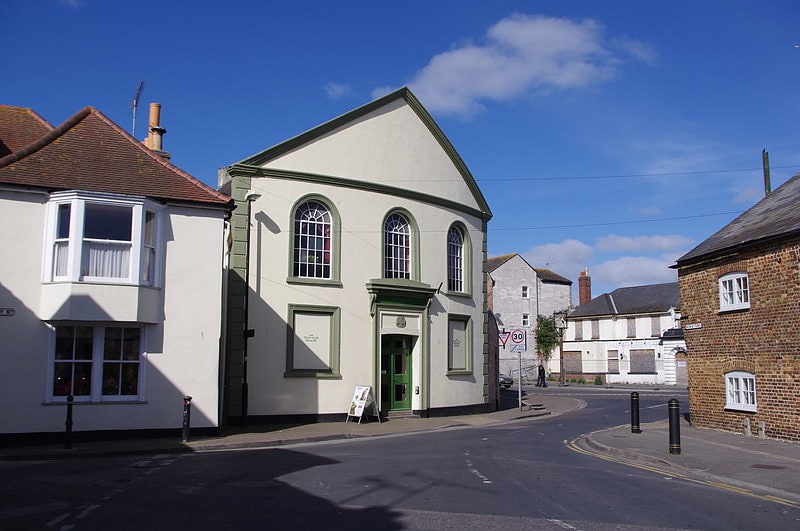
Museum in Dorchester, England. The Dorset Teddy Bear Museum is a teddy bear museum in Dorchester, Dorset, southern England.
The museum includes Teddy Bear House and displays antique and other teddy bears. Bears on display include Paddington Bear, Rupert Bear, and Winnie the Pooh. The earliest bear dates from 1906 and there are also life-sized bears.[7]
Address: Cnr. of High East Street and Salisbury Street, DT1 1JU Dorchester
Maumbury Rings
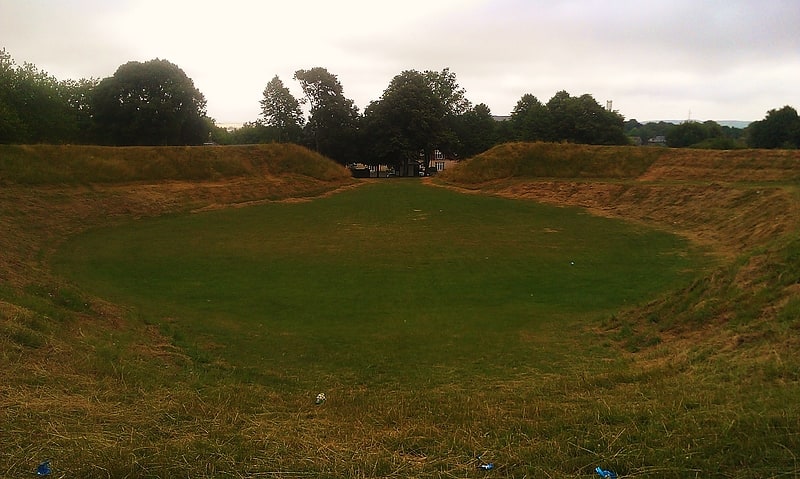
Historical landmark in Dorchester, England. Maumbury Rings is a Neolithic henge in the south of Dorchester town in Dorset, England. It is a large circular earthwork, 85 metres in diameter, with a single bank and an entrance to the north east. It was modified during the Roman period when it was adapted for use as an amphitheatre, and the site was remodelled again during the English Civil War when it was used as an artillery fort guarding the southern approach to Dorchester. The monument is now a public open space, and used for open-air concerts, festivals and re-enactments.[8]
Address: Maumbury Road, Dorchester
Thomas Hardy Statue
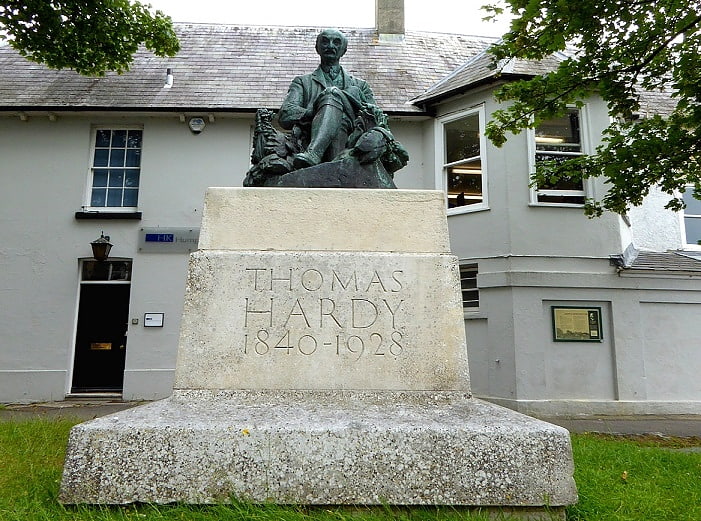
Statue by Eric Kennington. Thomas Hardy Statue is a statue of Thomas Hardy, located at Dorchester, Dorset, England. It was funded by public subscription to commemorate Hardy's life and works, three years after his death. Designed by Eric Kennington, the statue was unveiled on 2 September 1931 by Sir James Matthew Barrie. It has been a Grade II listed monument since 1950.[9]
Kingston Maurward House

Country house in Kingston Maurward, England. Kingston Maurward House is a large Grade I listed Georgian English country house set in a 750-acre estate in Dorset situated in the Frome valley two miles east of Dorchester.[10]
Dorset Martyrs Memorial
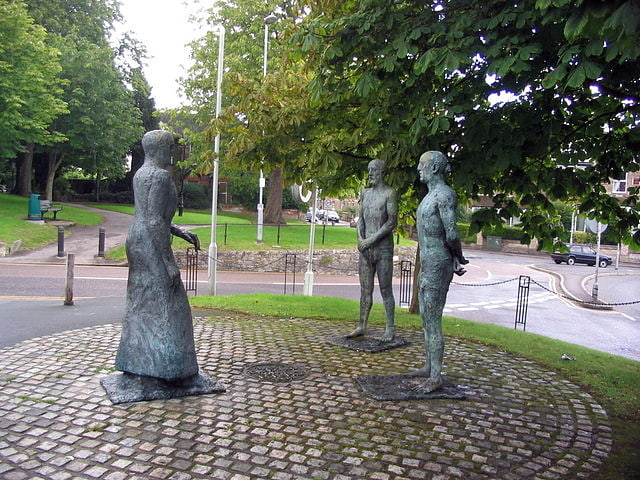
The Dorset Martyrs Memorial is a grade II listed sculpture by Elisabeth Frink in Dorchester, Dorset, England. It was unveiled in 1986 on the site of the gallows where Catholic martyrs were hanged in the 16th and 17th centuries.[11]